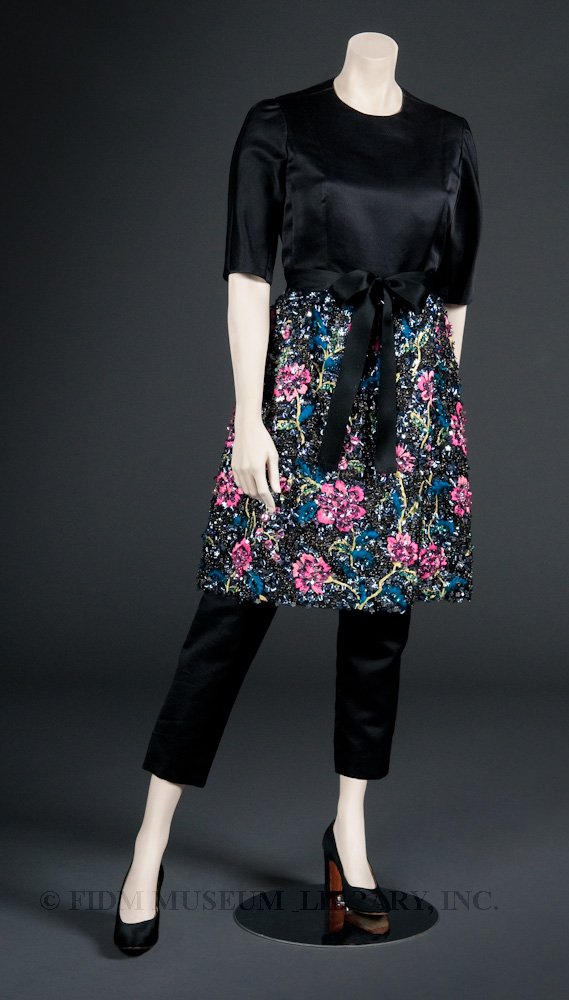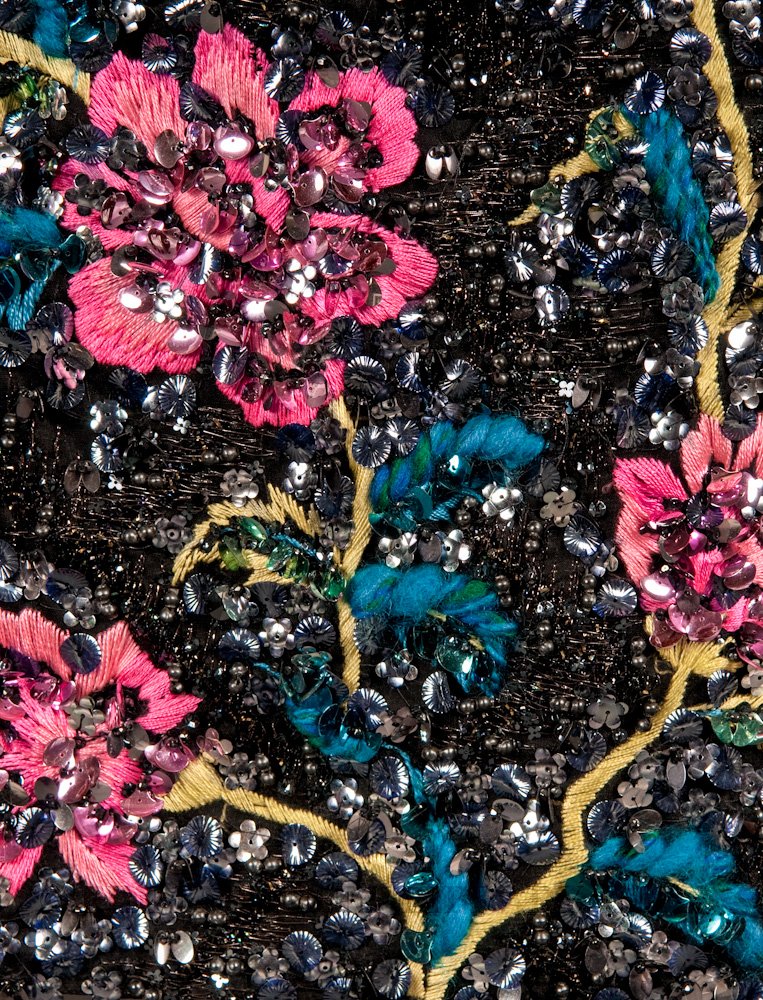Givenchy evening jumpsuit, 1968

Evening Jumpsuit
Hubert de Givenchy
Fall/Winter 1968
Transfer from The Museum at the Fashion Institute of Technology
97.291.13AB
Hubert de Givenchy (b. 1927) learned his craft by training with some of the most illustrious names in 20th-century haute couture: Jacques Fath, Robert Piguet, Lucien Lelong, and Elsa Schiaparelli. And though Givenchy never formally apprenticed with Balenciaga, the Spanish designer was a valued mentor. Like Balenciaga, Givenchy eschewed novelty and flash for quiet elegance. Givenchy began his training in 1945, launching his first solo collection in 1952. Perhaps mindful of his status as a newcomer, the starting price for Givenchy's first collection was low, about $60. When his debut "proved extremely popular," he immediately raised his base price to $370, still less than other Parisian couturiers.1
At the height of his career he dressed many women of style, including Betsy Bloomingdale, Elizabeth Taylor, Jacqueline Kennedy, and Audrey Hepburn. Givenchy and Hepburn had a particularly fruitful relationship. He not only dressed her in films including Sabrina (1954), Charade (1963), Funny Face (1957) and Breakfast at Tiffany's (1961), he also designed much of her personal wardrobe. Vogue described their sartorial collaborations as igniting a "magical flint-on-steel spark."1
In the late 1960s, Pierre Cardin, André Courrèges, and Rudi Gernreich were actively opposing the ideals of the haute couture. Though Givenchy was still designing with the haute couture client in mind, this jumpsuit demonstrates that he wasn't entirely immune to the appeal of youthquake fashion. The silhouette, slim, with a removable overskirt, suggests the free-wheeling fashions of the late 1960s, but the craftsmanship and attention to detail are in the best tradition of the haute couture. No throw-away fabrics or shoddy construction here—both bodice and trousers are entirely lined with silk fabric, as is the removable skirt. Crafted from black silk gazar, the jumpsuit features a wrap-around skirt encrusted with decorative embellishment. Meandering flowers, embroidered in multiple shades of pink, have wooly blue/green leaves and tan stems. Negative spaces between flowers and foliage are filled with sequins (both flower-shaped and round) and metallic embroidery stitches. The result is a rich visual feast, the perfect counterpoint to the sleek lines of the black jumpsuit.
1 "Taxes and Costs Bedevil Paris Dressmakers, Though Spring Styles are Selling Well." New York Times (Feb. 19, 1952) 23.
2 "The Jaipur look for summer—Audrey Hepburn's new Givenchy choices." Vogue (Jun 1, 1964): 68.
